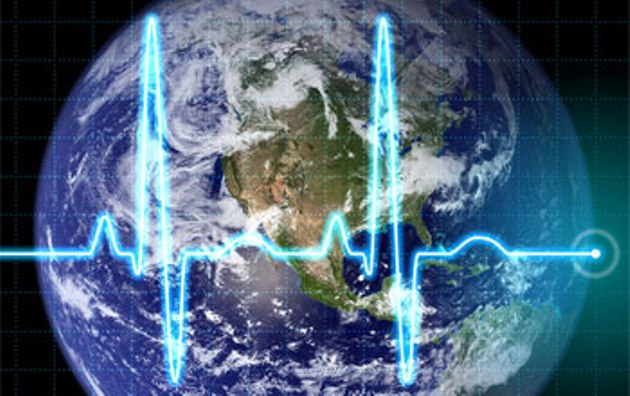
How's Earth's Health? New Network to Keep Tabs

How healthy are America's plants, animals and environment? A new nationwide program will help answer that question.
Called the National Ecological Observatory Network (NEON), the program encompasses a series of monitoring stations that will measure the health of ecosystems by taking snapshots from strategically chosen locations across the country — analogous to the way an EKG monitors the health of the heart, said Lily Whiteman, a spokeswoman for the National Science Foundation (NSF), which funds NEON.
Scientists say the monitoring effort is essential because so many factors are influencing Earth's ecosystems. To truly understand the impact of these factors, researchers need a way to watch these effects over time. Understanding the impacts will help inform policies dealing with issues ranging from global warming to urban planning.
"Earth's living systems are experiencing the greatest rates of change in history, due to land-use changes, invasive species and climate change," said Elizabeth Blood, the NSF program director for NEON, during a teleconference on April 19. "Many of these changes will be abrupt and unpredictable."
NEON will help understand these changes, and avoid negative effects on species as much as possible, she said. "Our understanding of life's living systems doesn't match that of the [Earth and its geology] or the atmosphere."
NEON is beginning to come online and will begin providing data later this year, Blood said. The network will be fully operational by 2017 and is expected to continue its research for 30 years, giving scientists a vital long-term data set to understand how humans are impacting the environment, Blood said.
The program will record data from 106 different spots throughout the country — 60 on land and 46 at sea, Blood said. Each site will be outfitted with various sensors to record data, as well as stations where scientists can identify and quantify species, and conduct other types of research.
Sign up for the Live Science daily newsletter now
Get the world’s most fascinating discoveries delivered straight to your inbox.
The project also includes an aircraft with a variety of instruments to measure what types of plants are present and what land-use changes (like development or agricultural activities) have occurred since the last time the area was examined.
The aircraft, which will travel among the various sites in the network, has already begun to examine the effects of the High Park wildfire, a huge blaze that occurred last summer near Fort Collins, Colo. Its baseline readings will help understand how much erosion the fire created, and how quickly forests can come back from such events, Tom Kampe, a researcher with NEON, said during the teleconference.
Researchers say it is important to fund this project because ecology underlies many aspects of the economy: The food we eat, for example, depends on good growing conditions — just one small way humans are affected by the environment.
"A number of the questions [NEON seeks to answer] are significant — as significant as many of the economic issues we face," Blood said. "It's designed to study major disasters like hurricanes and fires, in which we need basic science information to better understand how to manage them, both before and after."
Email Douglas Main or follow him @Douglas_Main. Follow us @OAPlanet, Facebook or Google+. Original article on LiveScience's OurAmazingPlanet.










